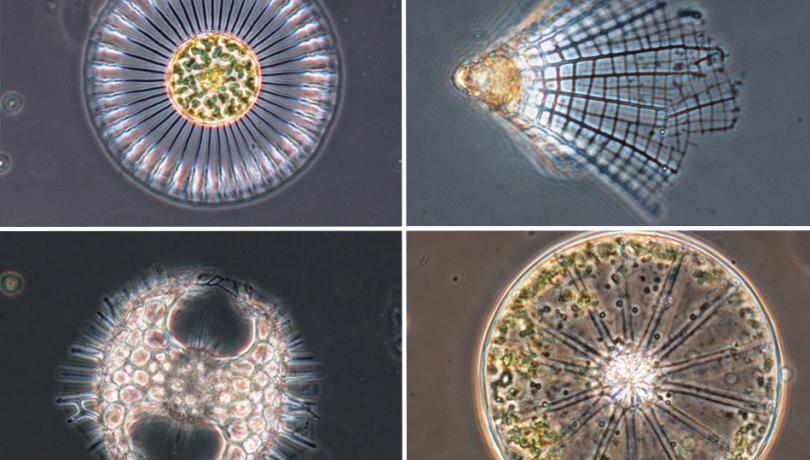A group of international researchers, led by AZTI scientists, and with a large contribution of ICM-CSIC researches show in a paper published in the latest issue of Nature Communications that the size of marine plankton is key to its global dispersal and distribution. It is an important discovery because plankton form the base of the food chain in the sea, produce 50% of the oxygen we breathe and also remove CO2 from the atmosphere. These functions depend on the distribution of the different plankton species and on their body size.

A group of international researchers, led by AZTI scientists, and with a large contribution of ICM-CSIC researches show in a paper published in the latest issue of Nature Communications that the size of marine plankton is key to its global dispersal and distribution. It is an important discovery because plankton form the base of the food chain in the sea, produce 50% of the oxygen we breathe and also remove CO2 from the atmosphere. These functions depend on the distribution of the different plankton species and on their body size.
In the study entitled “Large-scale ocean connectivity and planktonic body size”, an international team of researchers has discovered a negative relationship between the dispersal scales of various plankton and micro-nekton groups and their body size. The groups that were addressed included a wide range of communities and sizes, from bacteria to small mesopelagic fish, including microalgae and zooplankton.
“The ocean is the largest continuous environment on earth and in the long term all marine ecosystems are interconnected by ocean currents” explains Ernesto Villarino, AZTI researcher and main author of the study. He says, however, that “biological connectivity or the exchange of individuals across geographically separated subpopulations is not uniform, as there are barriers that hinder their dispersal. Identifying which factors affect the distribution of planktonic species is essential for understanding how global change will affect marine ecosystem performance.”
As well as AZTI and ICM-CSIC researchers, scientists from institutions in Spain, US, Sweden, United Kingdom and Saudi Arabia have taken part in the study, and its results show that dispersal is more important than environmental conditions (like sea temperature and nutrients, for example) in the distribution of global planktonic diversity.
The second result shows that there is a negative correlation between plankton body size and the scale of dispersal; that is, the larger the planktonic body size is, the smaller the connection will be between communities. This happens because smaller species are more abundant and tend to be more dispersed by currents.
The data for the study was collected during the Malaspina 2010 circumnavigation expedition, which generated a consistent and high-resolution inventory of the deep ocean ecosystem and biodiversity. The study that has just been published contributes to the understanding of how marine biodiversity is maintained locally and structured spatially.
Reference article:
Villarino, E., Watson, JR., Jönsson, B., Gasol, JM., Salazar, G., Acinas, SG., Estrada, M., Massana, R., Logares, R., Giner, CR., Pernice, MC., Olivar, MP., Citores, L., Corell, J., Rodriguez-Ezpeleta, N., Acuña, JL, Molina-Ramirez, A., González-Gordillo, JI., Cozar, A., Martí, E., Cuesta, JA., Agustí, S., Fraile-Nuez, E., Duarte, CM., Irigoien, X and Chust, G. Large-scale ocean connectivity and planktonic body size. Nature Communications. DOI: 10.1038/s41467-017- 02535-8.
NdP Delegación CSIC Cataluña y AZTI